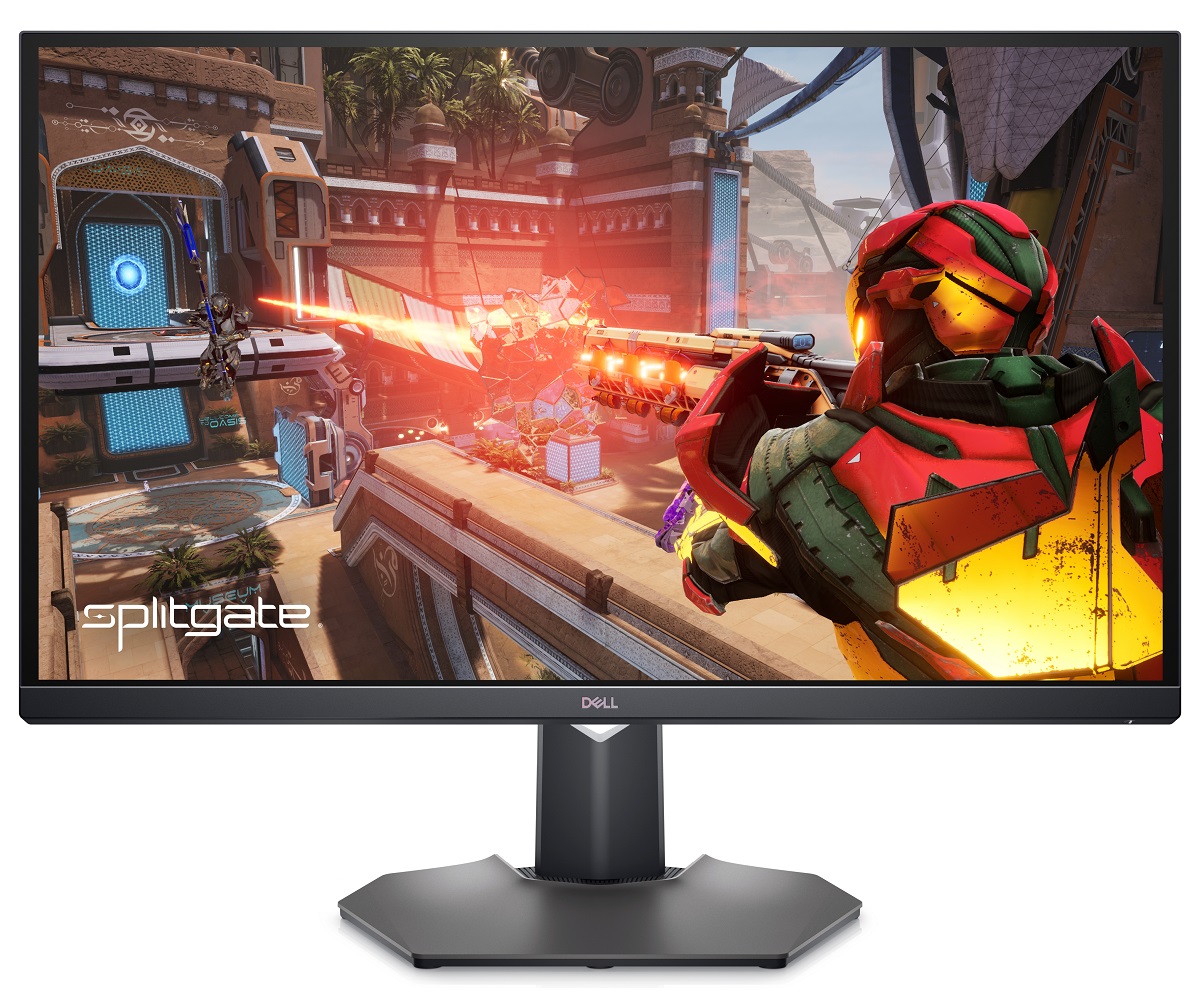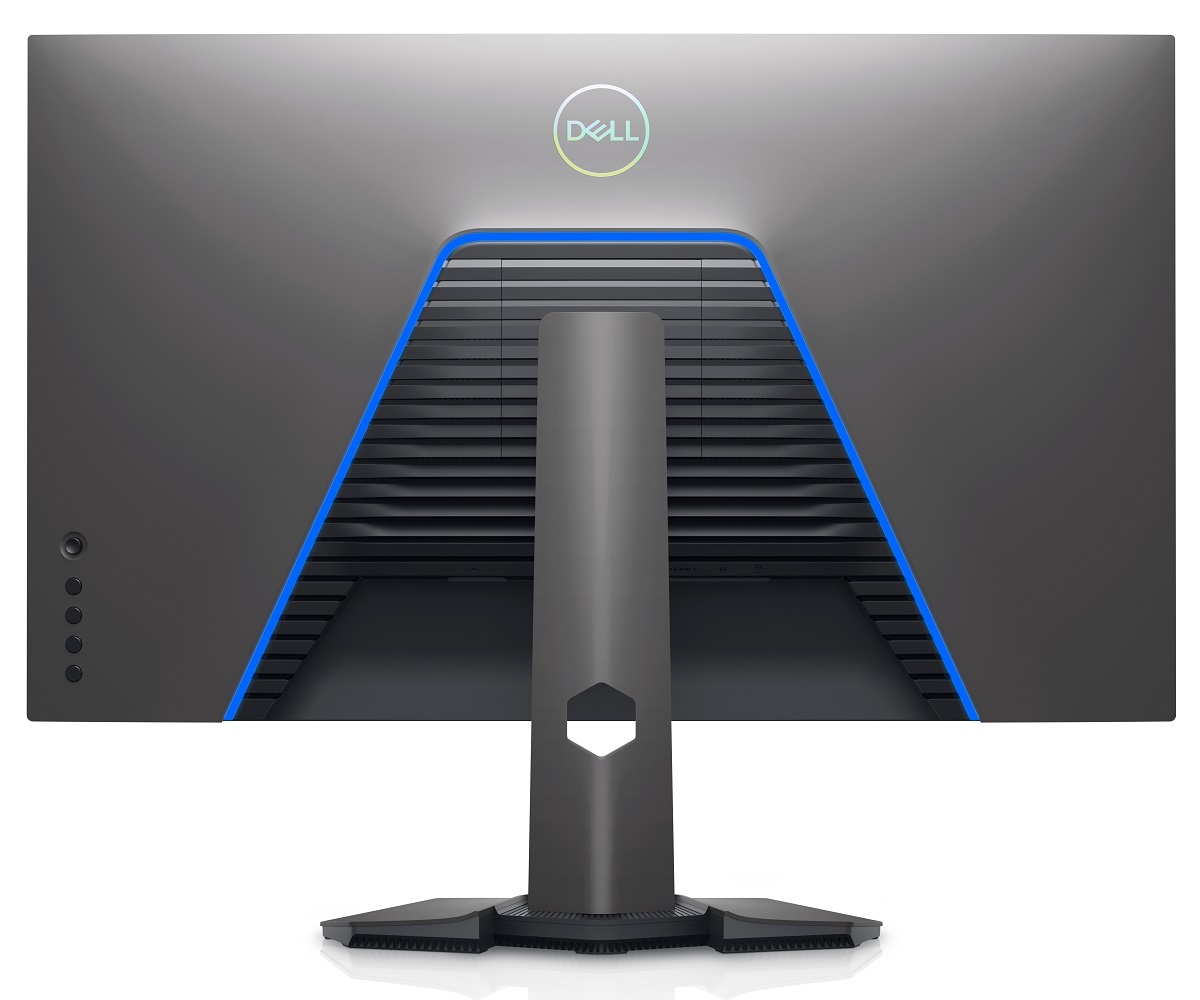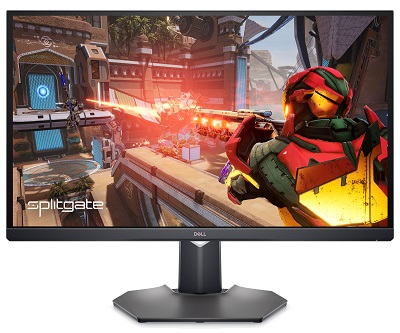
As an Amazon Associate I earn from qualifying purchases made using the “Buy” button at the bottom of this post. Where possible, you’ll be redirected to your nearest store. Further information on supporting our work.
Whilst high refresh rate ‘4K’ models hog most of the limelight at the moment, for some the WQHD resolution is more practical. The Dell G3223D offers this, spread across a ~32″ screen for a good dose of immersion. The monitor shows the usual ‘G’ series design cues, with a polygonal stand base and shiny central brand logo with slight ‘rainbow’ effect when light strikes it. Dark matte plastics are used extensively, with a dual stage design used for the top and side bezels. This means a slim panel border surrounds the image, flush with the rest of the screen, whilst there’s also a thin hard plastic outer component. The OSD (On Screen Display) is controlled by buttons and a joystick at the rear of the screen, running down the right side as viewed from the front.
A 31.5″ IPS-type panel with 2560 x 1440 (WQHD or 1440p) resolution and 165Hz refresh rate is used. The LG Display LM315WQ1, more specifically. The monitor has a light to very light matte screen surface, a 1000:1 static contrast ratio, 178°/178° viewing angles and 10-bit colour via 8-bit + FRC. Adaptive-Sync is supported including AMD FreeSync Premium Pro and Nvidia’s ‘G-SYNC Compatible Mode’, with a 48 – 165Hz VRR range plus LFC. A flicker-free WLED backlight is employed, with 400 cd/m² typical maximum luminance and 95% DCI-P3 colour gamut. The monitor includes ‘ComfortView Plus’, which indicates its peak of blue light is shifted to less energetic wavelengths to potentially aid viewing comfort (TÜV Rheinland certified hardware solution). Additionally, a ‘ComfortView’ Low Blue Light (LBL) setting is included to promote a more relaxing viewing experience. VESA DisplayHDR 400 support is included, a basic HDR level that allows the screen to put its reasonably generous gamut to good use alongside 10-bit colour processing. It doesn’t require a particularly high luminance level or require local dimming to enhance contrast.
A 1ms grey to grey response time is specified, but as usual pay little attention to this figure. The monitor is mainly matte grey at the rear with dark grey ventilation slats to aid passive cooling. The stand attaches centrally and can be quickly removed via a quick-release mechanism, with provision for 100 x 100mm VESA mounting included. The stand offers tilt, swivel and height (100mm or 3.94 inches) adjustment. The ports face downwards and include; AC power input (internal power converter), 2 HDMI 2.0 ports, DP 1.4 and USB-C (15W PD, DP Alt Mode, upstream data). Outside the main port area there are 2 USB 3.2 Gen1 ports and a 3.5mm headphone jack. These face downwards towards the left side as viewed from the fromt, placed for easy access from the front. The monitor includes 2-system PiP/PbP and has a Uniformity Compensation (UC) feature to even out brightness at the expense of contrast.
Further information (Japanese, requires English translation) can be found on the manufacturer’s website. It’s listed for ~£410 in the UK. Details on pricing and availability in markets such as the US still to come.
|
|









